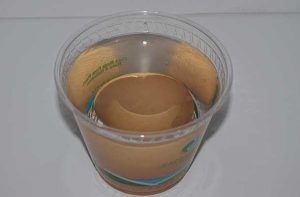SCIENCE EXPERIMENTS FOR KIDS
BARE EGGS
A bare egg is simply an egg without a shell.
Using vinegar, you can dissolve the shell without breaking the delicate membrane that contains the egg.

Grade level:
Kindergarten and above, with help from an adult
Timing:
This activity will take a few days from start to finish. But don’t be intimidated; it takes just a few minutes!
GATHER THIS:
- An egg (or two)
- A cup or a container
- White vinegar
- A large spoon
THEN DO THIS:
- Take a raw egg and place it in a cup or container.
- Pour in your white vinegar (also called acetic acid).
- Observe the egg. What do you notice happening? Do you see little bubbles surrounding the egg?
- Place the egg and container in the refrigerator, and let it sit for 24 hours.
- The next day, use your spoon to scoop the egg out of the vinegar.
- Be gentle. Because the eggshell has been dissolving, the egg membrane may be the only thing holding the egg together.
- Carefully dump out the vinegar.
- Put the egg back in the container and cover it with fresh vinegar.
- Leave the egg in the refrigerator for another 24 hours.
- The following day, scoop the egg out again with your spoon and rinse it carefully.
You should have a whole egg without a shell!
WHAT IS HAPPENING?
The shell is made up of calcium carbonate that gets dissolved by the acid. The bubbles you may observe are carbon dioxide, a result of the chemical reaction. The inside of the egg should still be intact because the vinegar doesn’t break down the egg membrane. The egg also swells up because some of the liquid seeps through the membrane by osmosis. You should be able to see the yellow yolk through the membrane.
Join the CuriOdyssey Community
LOCATION
1651 Coyote Point Drive
San Mateo, CA 94401
Ohlone Land Acknowledgement
650-342-7755
info@curiodyssey.org
CuriOdyssey is a 501(c)(3) non-profit, Tax ID 94-1262434

